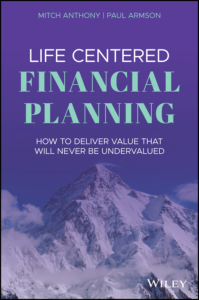Life-Centered Financial Planning Essentials: Client Reality Check
Your clients want—and need—a reality check from you:
- Reality Check 1: Your clients need to know where their money is going. That means conducting a lifetime cash flow analysis with your clients.
- Reality Check 2: Your clients need to be responsible for their own assumptions.
- Reality Check 3: Your clients need to understand that what they do with their income impacts their life outcome.

There are only four actions we can take with our money—we can owe it, grow it, use it to live, or give it away. Taxes and debt are monies that we owe, and savings and investments are monies that we grow. Lifestyle spending is money used for living, and charitable donations are monies used for giving. The technique used here involves backing into a client’s spending number by entering their owe, grow, and give numbers first, and voila—what’s left is spending (living) because that’s the only other way that clients could be using their money.
The Owe-Grow-Live-Give model helps clients recognize where they are regarding their personal allocation of income. The conversation starts with an advisor inputting or writing down a client’s annual income, then the amount owed in mortgage debt and taxes (this is the Owe number). Next, input or write down the client’s qualified savings number (this is the Grow number), and finally, input or write down deductible contributions (this is the Give number). If you’re doing this by hand, you’ll have to do a little guesstimating to fill in these three categories appropriately in your hand-drawn circle.
Clients are surprised when they see how much of the pie is lifestyle spending. This is a simple, noninvasive way to give clients a reality check.
Learn more in Life Centered Financial Planning: How to Deliver Value that Will Never be Undervalued, available at local or online bookstores as well as at mitchanthony.com.